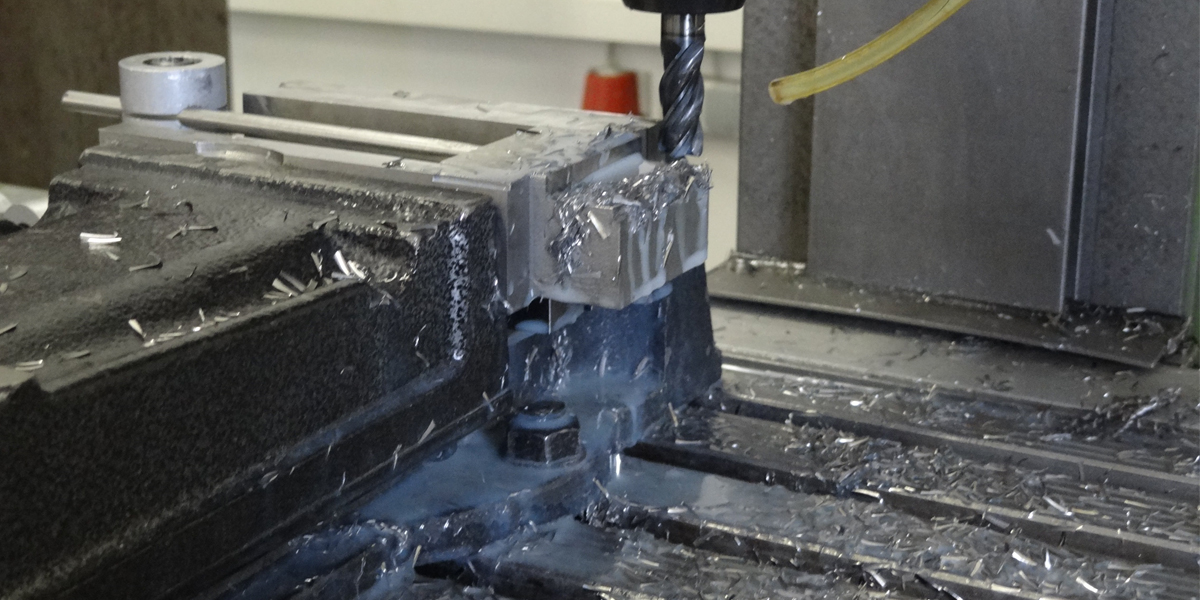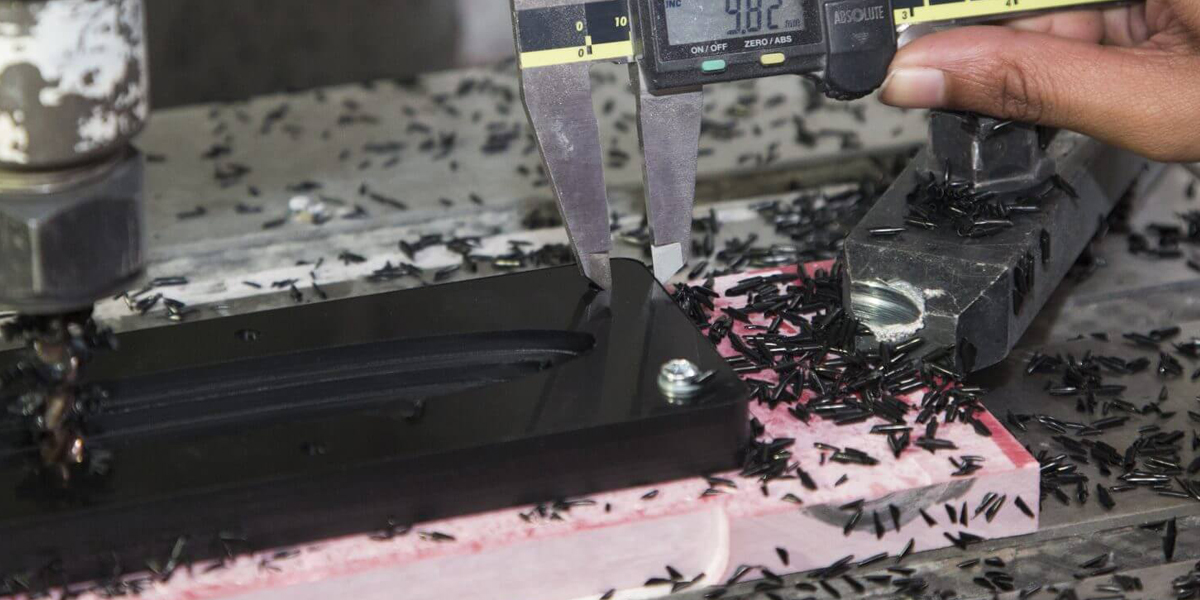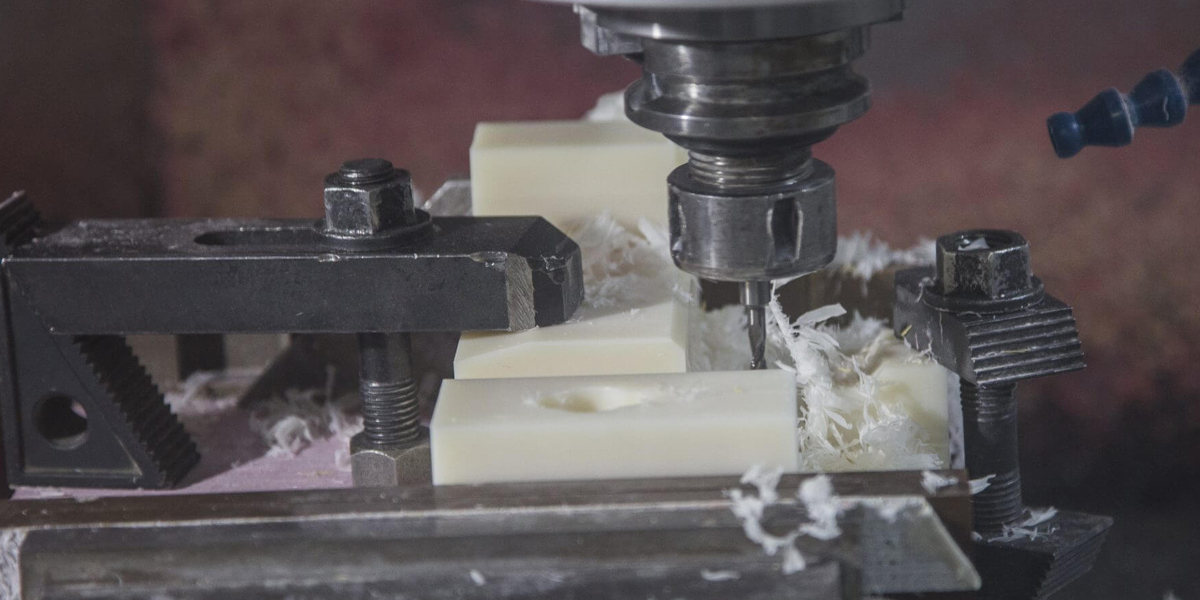CNC Milling or Computer Numerical Control Milling is a machining process that employs computer-controlled and rotating multi-point cutting tools to progressively remove material from a workpiece and produce custom-designed parts or products. It’s suitable for machining a variety of materials such as metals, plastics, and wood and producing a variety of custom designed parts and products.
A variety of functions are available under the umbrella of Precision CNC Milling Services, including mechanical, chemical, electrical, and thermal machining.

Milling Definition
What is milling? It is a type of machining that uses a tool to shape a workpiece on a table that is usually movable, although some milling machines also have movable tools. Milling was originally a manual operation performed by workers, but today, most milling is done by CNC milling machines, which utilize computers to oversee the milling process.CNC milling can provide greater precision, accuracy, and productivity, but in some cases, manual milling can still be useful. Manual milling requires a great deal of technical skill and experience, thus reducing turnaround time. It also has the added benefit that manual milling is cheaper and users don't have to worry about programming the machine.
Overview of CNC Milling Machining
Like most traditional mechanical CNC machining processes, the CNC milling process utilizes computer controls to operate and manipulate the machine tool that cuts and shapes the blank. Additionally, the process follows the same basic production stages as all CNC machining processes, including:
Designing the CAD model
Converting the CAD model into a CNC program
Setting up the CNC milling machine
Performing the milling operation
The CNC milling process begins with the creation of a 2D or 3D CAD part design. The complete design is then exported to a CNC-compatible file format and converted by CAM software into a CNC machine program, which instructs the machine's actions and the movement of the tool across the workpiece. Before operators run the CNC program, they prepare the CNC milling machine by securing the workpiece to the machine's work surface (i.e., table) or workholding device (e.g., a vise) and mounting the milling tool to the machine's spindle.The CNC milling process employs either a horizontal or vertical CNC-powered milling machine-depending on the specifications and requirements of the milling application-as well as rotating multipoint (i.e., multi-tooth) cutting tools, such as milling cutters and drills. When the machine is ready, the operator starts the program through the machine interface, prompting the machine to perform the milling operation.
Once the CNC milling process is initiated, the machine begins rotating the cutting tool at speeds of up to several thousand revolutions per minute. Depending on the type of milling machine being used and the requirements of the milling application, as the tool cuts into the workpiece, the machine will perform one of the following actions to make the necessary cuts in the workpiece:
Slowly feed the workpiece into the stationary rotating tool
Move the tool over the stationary workpiece
Move the tool and workpiece relative to each other

CNC milling is a machining process suited for producing high-precision, high-tolerance parts in prototypes, one-offs, and small to medium-sized production runs. While parts are typically manufactured with tolerances ranging from ±0.1mm to ±0.5 mm, some milling machines can achieve tolerances as high as ±0.025 mm or even higher. The versatility of the milling process allows it to be used in a wide range of industries and for a variety of part features and designs, including slots, chamfers, threads, and cavities.
The most common CNC milling operations include:
Face milling
Surface milling
Angle Milling
Forming Milling
Face milling
Wherein the axis of rotation of the cutting tool is perpendicular to the surface of the workpiece. The method uses an end milling cutter having teeth on both the periphery and the tool face, wherein the peripheral teeth are primarily used for cutting and the end face teeth are used for finishing applications. Typically, face milling is used to create flat surfaces and contours on finished parts and can produce a higher quality finish than other milling processes. Both vertical and horizontal milling machines support this process.
Types of face milling include end mills and side mills, which use end mills and side mills, respectively.
Surface Milling
Face milling, also known as surface milling or flat milling, in which the axis of rotation of the cutting tool is parallel to the surface of the workpiece. The process uses common milling cutter teeth to perform cutting operations at the periphery. Depending on the specifications of the milling application, such as depth of cut and size of the workpiece, narrow and wide cutters can be used. Narrow cutters allow for deeper cuts, while wide cutters can be used to cut larger surface areas. If a flat milling application requires the removal of a large amount of material from the workpiece, the operator begins by using a coarse-tooth milling cutter with a slow cutting speed and a fast feed rate to produce an approximate geometry of the custom-designed part. The operator then introduces finer toothed cutters, faster cutting speeds and slower feed rates to produce details of the finished part.
Angle Milling
Angle milling is where the axis of rotation of the cutting tool is at an angle relative to the surface of the workpiece. The process uses a single-angle milling cutter (angled according to the specific design being machined) to produce angular features such as chamfers, serrations, and flutes. A common application of angle milling is the production of dovetails, which are produced using 45°, 50°, 55° or 60° dovetail cutters depending on the design of the dovetail.
Forming Milling
Forming milling is a milling operation involving irregular surfaces, contours and profiles, such as parts with curved and flat surfaces or fully curved surfaces. The process employs form milling cutters or fly cutters that are specialized for specific applications, such as convex, concave and corner fillet milling cutters. Some common applications for form milling include the production of hemispherical and semicircular cavities, beads and contours, as well as complex designs and intricate parts through a single machine setup.
Other Milling Machine Operations
In addition to the above operations, milling machines can be used to perform other specialized milling and machining operations. Examples of other types of milling machine operations available include:
Straddle Milling:
Straddle milling is a milling operation in which the machine tool machines two or more parallel surfaces of a workpiece by cutting them in a single pass. The process uses two tools on the same machine mandrel that are arranged so that the tool is located on either side of the workpiece and both sides can be milled at the same time.
Combined milling: What is combined milling? Combined milling is a milling operation performed with two or more cutters (usually of different sizes, shapes or widths) on the same machine mandrel. Each cutter can perform the same cutting operation at the same time or different cutting operations at the same time, allowing more complex parts to be produced in shorter production times.
Contour Milling:
Contour milling is where a machine tool creates a cutting path along a vertical or inclined surface on a workpiece. The process uses contour milling equipment and cutting tools that can be parallel or perpendicular to the surface of the workpiece.
Gear Cutting:
Gear cutting is a milling operation that uses involute gear cutters to produce gear teeth. These cutters are a type of form milling cutter and can be supplied in a variety of shapes and pitch sizes depending on the number of teeth required for a particular gear design. Specialized turning tool bits can also be used in this process to produce gear teeth.
Other Machining Processes:
Because milling machines support the use of machine tools other than milling tools, they can be used for processes other than milling, such as drilling, boring, reaming and tapping.
Like most CNC machining processes, CNC milling uses CAD software to generate an initial part design and CAM software to generate a CNC program that provides machining instructions to produce the part. The CNC program is then loaded onto the selected CNC machine to initiate and execute the milling process.
Milling Machine Considerations
Typically, milling machines are categorized into horizontal and vertical machine configurations and are differentiated by the number of axes of motion:
On a vertical milling machine, the machine spindle is oriented vertically, while on a horizontal milling machine the spindle is placed horizontally. Horizontal machines also employ spindles during milling to provide additional support and stability, and have the ability to support a wide range of cutting tools, such as in wheel milling and straddle milling. The controls on both vertical and horizontal milling machines depend on the type of machine being used.
For example, some machines can raise and lower the spindle and move the table laterally, while others have a fixed spindle and table that can move horizontally, vertically and rotationally. When choosing between vertical and horizontal milling machines, manufacturers and shops must consider the requirements of the milling application, such as the number of surfaces to be milled and the size and shape of the part. For example, heavy workpieces are better suited for horizontal milling operations, while countersink applications are better suited for vertical milling operations. Auxiliary equipment can also be used, which can be retrofitted to a vertical or horizontal machine to support the opposite process.
Most CNC milling machines are available with three to five axes-typically providing performance along the XYZ axes and, if applicable, around a rotary axis.The X and Y axes indicate horizontal movement (left-right and forward-backward, respectively, in a plane), while the Z axis indicates vertical movement (up and down) and W indicates horizontal movement. -axis indicates diagonal movement in a vertical plane. In basic CNC milling machines it is possible to move horizontally in two axes (XY), while newer models allow for additional axes of motion, such as 3-, 4- and 5-axis CNC machines. The following outlines some of the features of milling machines categorized by the number of axes of motion.
3-Axis:
Capable of meeting most machining needs
Easy machine setup.
Only one workstation is required
Requires more operator knowledge
Lower efficiency and quality
4-axis:
Better functionality than 3-axis machines
Higher precision and accuracy than 3-axis machines
More complex machine setup than 3-axis machines
More expensive than 3-axis machines
Can be configured with multiple axes (e.g. 4 + 1, 3 + 2 or 5)
More powerful
Easier and faster to operate than 3- and 4-axis machines, depending on the configuration
Higher levels of quality and precision
Depending on the configuration, it runs slower than 3- and 4-axis machine tools for machining
More expensive than 3- and 4-axis machines
Depending on the type of milling machine used, the machine, the machine table or both components can be dynamic. Typically, dynamic tables move along the XY axis, but they are also capable of moving up and down to adjust the depth of cut and rotating along the vertical or horizontal axis to extend the cutting envelope. For milling applications that require dynamic tools, the machine moves vertically along multiple axes in addition to its inherent rotational motion so that the circumference of the tool (not just its tip) cuts into the workpiece. CNC milling machines with greater degrees of freedom allow for greater versatility and complexity in the milled parts produced.
Types of Milling Machines
There are several different types of milling machines available for a variety of machining applications. In addition to being categorized based solely on machine configuration or number of axes of motion, milling machines can also be categorized based on their specific characteristics. Some of the most common types of milling machines include:
Knee type
Ram type
Bed type (or fabrication type)
Planer type
Knee Type:
Knee type milling machines utilize a fixed spindle and a vertically adjustable table that rests on a saddle supported by a knee. Depending on the position of the machine, the knee can be lowered and raised on the column. Some examples of knee type milling machines include floor-standing and bench-top horizontal milling machines.
Ram Type:
Ram type milling machines utilize a spindle that is fixed to the column, which allows the machine to move along the XY axis in a removable housing (i.e., RAM). The two most common types of vertical milling machines include floor-mounted universal horizontal and rotary cutterhead milling machines.
Bed Type:
Bed type milling machines utilize a table that is fixed directly to the machine tool to prevent the workpiece from moving along the Y and Z axes. The workpiece is located underneath the cutting tool, which is able to move along the XYZ axis, depending on the machine tool. Some of the available bed type milling machines include single sided, double sided and triple sided milling machines. Single-sided machines utilize a single spindle that moves along either the X or Y axis, while double-sided machines utilize two spindles, and triplex machines utilize three spindles (two horizontal and one vertical) for machining along the XY and XYZ axes, respectively.
Planer Milling Machines:
Planer milling machines are similar to bed milling machines in that they have a table that is fixed along the Y and Z axes as well as a spindle that can move along the XYZ axis. However, planer milling machines can support multiple machines (usually up to four) at the same time, thus reducing lead times for complex parts.
Some of the specialized types of milling machines available include rotary table, rotary drum, and planetary milling machines. Rotary table milling machines have a circular table that rotates around a vertical axis and use machines located at different heights for roughing and finishing. Drum milling machines are similar to turntable machines, except that the table is called a "drum" and it rotates around a horizontal axis. In planetary machines, the table is fixed and the workpiece is cylindrical. The rotating machine moves over the surface of the workpiece, cutting out internal and external features (such as threads).

Machining materials
The CNC milling process is best suited for use as a secondary machining process to provide finishing capabilities for custom-designed parts, but it can also be used to produce custom-designed and specialty parts from scratch.CNC milling technology allows the process to machine parts in a variety of materials, including:
Metals (including alloys, specialty metals, heavy metals, etc.)
Plastics (including thermosets and thermoplastics)
Elastomers
Composites
Wood
As with all machining processes, several factors must be considered when selecting materials for milling applications, such as the material's properties (i.e., hardness, tensile and shear strengths, and chemical and heat resistance), as well as the material's cost-effectiveness. Machining Materials. These criteria determine the suitability of the material for the milling process and the budgetary constraints of the milling application, respectively. The material selected determines the type of machine tool to be used and its design, as well as the optimum machine settings, including cutting speed, feed rate and depth of cut.
Options
CNC milling is a machining process suitable for machining a wide range of materials and producing a variety of custom-designed parts. While the process may show advantages over other machining processes, it may not be suitable for every manufacturing application and other processes may prove to be more suitable and cost-effective.
Some non-conventional, machined processes (i.e., processes that do not utilize machine tools, but still employ mechanical material removal processes) include ultrasonic machining, waterjet cutting, and abrasive jet machining. Unconventional, non-mechanical machining processes (i.e., chemical, electrical, and thermal machining processes) provide other alternative methods of removing material from a workpiece that do not utilize a machine tool or mechanical material removal process, including chemical milling, electrochemical deburring, laser cutting, and plasma arc cutting. These non-conventional machining methods support the production of more complex machining, more demanding and more specialized parts that cannot normally be accomplished through conventional machining.
GET SOLUTION FOR YOUR CNC PROJECT NOW